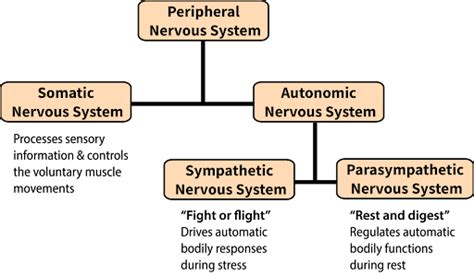Biopsychology - Divisions of the Nervous System
1/13
Earn XP
Description and Tags
Paper 2 Biopsychology - divisions of the nervous system
Name | Mastery | Learn | Test | Matching | Spaced |
|---|
No study sessions yet.
14 Terms
What are the 2 sections of the Nervous System
Central Nervous System (CNS)
Peripheral Nervous System (PNS)
What is the Central Nervous System
consists of the brain and spinal cord, which process information and coordinate activities throughout the body.
What is the spinal cord
a tube shaped bundle of nerves along the spine
ensures signals from brain transmit to the body
what does the brain do
regulates all major activity of body including temperature, heart rate and breathing
What is the peripheral nervous system
Network of nerves through the body that transmits information from the body to the central nervous system and vice versa
Draw the diagram of the subdivisions of the Peripheral Nervous system

What does the Somatic Nervous System do
controls voluntary and conscious and voluntary muscle movement and transmits sensory information to the central nervous system
Draw a flow chart of the reflex arc
stimulus —> receptor cell —> sensory neruon —> relay neuron —> motor neuron —> effector muscle —> response to stumulus
What is the Autonomic Nervous System
Involuntary fast response to threats. Transmits and receives info from organs to respond quickly to changes and maintain homeostasis in the body
What are the two sub divisions of the autonomic nervous system
Sympathetic Nervous System
Parasympathetic Nervous System
What does the Sympathetic Nervous System do?
Works with the endocrine system to prepare the body for physical activity.
Works with the endocrine system to release adrenaline to fuel physiological changes in the body
What physiological changes occur during fight or flight
Increased heart rate
Pupil dialation
Sweating
Decreased digestion
widened bronchial passages
What is the Parasympathetic Nervous System?
Brings the body back to a normal state
regulates digestion and urination
What phisiological changes occur during rest and digest (PNS)
Slows heart rate and breathing
lowers blood pressure
digestion restarts